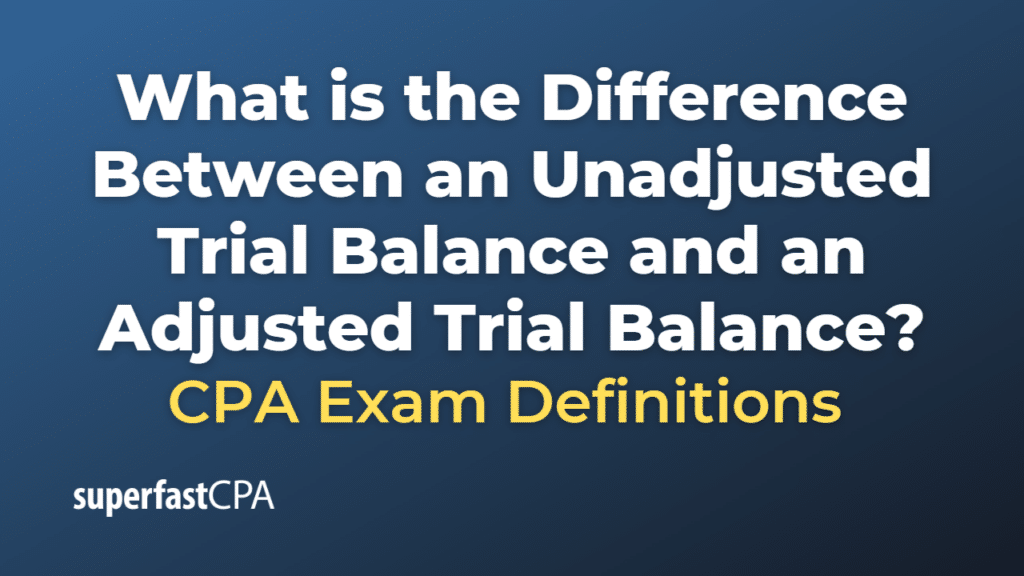Difference Between an Unadjusted Trial Balance and an Adjusted Trial Balance
The unadjusted trial balance and the adjusted trial balance are both integral parts of the accounting cycle, but they serve different purposes and are created at different times:
- Unadjusted Trial Balance:
An unadjusted trial balance is a list of all the business accounts that are set to have balances at the end of an accounting period, before any adjusting entries are made. It’s essentially a report that lists all account balances in the general ledger at a given point in time. The main purpose of an unadjusted trial balance is to ensure that the total of all debit balances equals the total of all credit balances, which should be the case in a correctly maintained double-entry accounting system. - Adjusted Trial Balance:
An adjusted trial balance is a list of all the account balances after the adjusting entries are made at the end of an accounting period. Adjusting entries are made for accruals and deferrals, as well as estimated amounts. These adjustments are made to more accurately reflect the financial position and performance of a business in accordance with the accrual basis of accounting. The adjusted trial balance is used to prepare the financial statements of a business.
So, the key difference between the unadjusted trial balance and the adjusted trial balance is the timing and the inclusion of adjusting entries. The unadjusted trial balance is created before adjusting entries are made, while the adjusted trial balance is created afterward. The adjusted trial balance includes adjustments for revenues and expenses that have been incurred but are not yet recorded in the accounts, while the unadjusted trial balance does not.
Example of the Difference Between an Unadjusted Trial Balance and an Adjusted Trial Balance
Let’s consider an example to better illustrate the difference between an unadjusted trial balance and an adjusted trial balance:
Assume that XYZ Company has the following unadjusted trial balance at the end of December:
| Accounts | Debit ($) | Credit ($) |
|---|---|---|
| Cash | 20,000 | |
| Accounts Receivable | 5,000 | |
| Supplies | 1,000 | |
| Equipment | 10,000 | |
| Accounts Payable | 3,000 | |
| Unearned Revenue | 2,000 | |
| Owner’s Equity | 31,000 | |
| Service Revenue | 8,000 | |
| Wages Expense | 3,000 | |
| Rent Expense | 2,000 | |
| Total | 41,000 | 44,000 |
As you can see, the total debits ($41,000) do not equal the total credits ($44,000), which indicates that some entries may be missing or incorrect.
Now, let’s assume the following adjusting entries at the end of December:
- $500 of supplies have been used.
- $1,000 of the unearned revenue has been earned.
- Wages of $2,000 have been incurred but not yet paid.
The adjusted trial balance, which takes into account these adjusting entries, would look like this:
| Accounts | Debit ($) | Credit ($) |
|---|---|---|
| Cash | 20,000 | |
| Accounts Receivable | 5,000 | |
| Supplies | 500 | |
| Equipment | 10,000 | |
| Accounts Payable | 5,000 | |
| Unearned Revenue | 1,000 | |
| Owner’s Equity | 31,000 | |
| Service Revenue | 9,000 | |
| Wages Expense | 5,000 | |
| Rent Expense | 2,000 | |
| Total | 43,500 | 46,000 |
Now the debit and credit totals are balanced, and the amounts for each account reflect the accrual basis of accounting, which provides a more accurate picture of the company’s financial position at the end of December.













